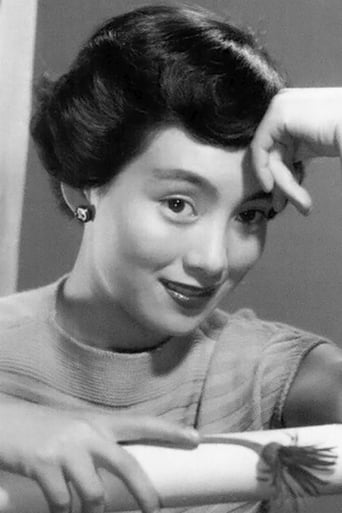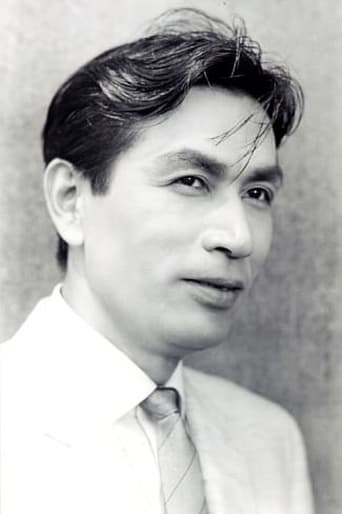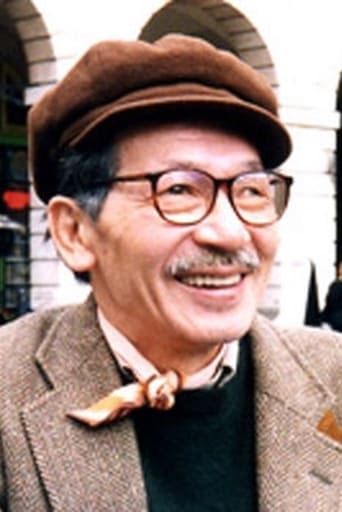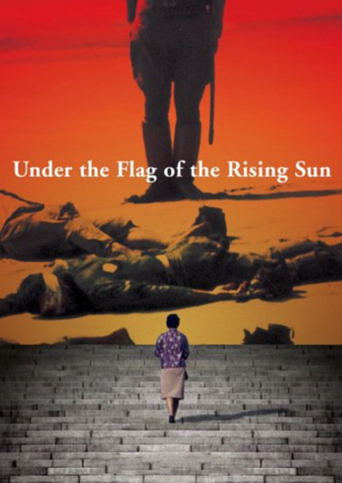
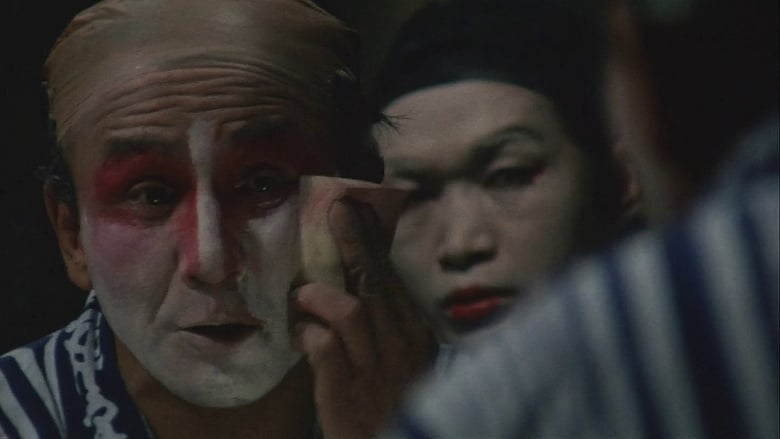
Under the Flag of the Rising Sun (1972)
A war widow determined to clear the name of her disgraced husband, who was court-martialed for desertion and executed. Official records have been destroyed, and the ministry that distributes benefits continues to deny her a pension. Twenty-six years after the war, she seeks out four survivors of her husband's garrison. Each tells a dramatically different story about her husband's conduct, but she is determined to learn the truth.
Watch Trailer
Cast


Reviews
UNDER THE FLAG OF THE RISING SUN / UNDER THE FLUTTERING MILITARY FLAG / TO RETURN TO THE FLUTTERING BATTLE FLAG (LIT.) (GUNKI HATAMEKU MOTONI). Viewed on DVD. Restoration/preservation = ten (10) stars; editing = eight (8) stars; subtitles = seven (7) stars; cinematography = five (5) stars. Director Kinji Fukasaku re-images a collection of documented/rumored war crimes/atrocities (based on a book of the same name) committed (and covered up) by the Japanese army against itself and punctuated by vivid/disturbing black and white (B&W) photographs of mostly unknown origin/authenticity. Fukasaku employs a clever plot device (of a lonely war widow's 26-year search for the truth about her husband's death) to dramatize military events that may or may not have occurred (there are many twists and turns plus a surprise ending), the power of post-war politics (as practiced by former military officers), and the lasting impact of war on veterans such as PTSD (post-traumatic stress disorder) and being left behind as the nation moves on (sound familiar?). The Director made his movie when yet another war (in Vietnam) was in full swing which he often references albeit indirectly. Actors are regularly give free reign to go to extremes so that Fukasaku can triple underline his anti-war stance (these performances often come across as simply silly). Lead actress Sachiko Hidari is a standout not only due to her plum role (as the truth-searching widow), but also her ability to portray an unsophisticated-but-stubborn village widow using a down-home dialect and keeping a slight smile even when delivering lines of serious dialog. Actress Sanae Nakahara is also excellent as the philandering wife of a veteran who only learns about her husband's (fabricated) war activities when Hidari's character pays a visit (Nakahare can change the nature/substance of her performances on a proverbial dime!). Cinematography (2.35 : 1, color, B&W) is uneven with many exterior shots suffering from hand-held camera artifacts and an overall graininess (to better blend with stock footage and photographs?). Editing is outstanding as the film smoothly moves back and forth between color and B&W, and from moving images to photographs. Music is inconsequential and virtually "invisible." Subtitles are fine. The condition of the original source material is outstanding. WILLIAM FLANIGAN, PhD.
"Gunki Hatemeku Motoni" beings 26 years after WWII has ended. A war widow is STILL trying to piece together what, exactly, happened to her husband. Much of this is because although the military reports he died, they refuse to grant her any sort of pension or recognition that he died honorably. After lots of pressing, she learns that he was executed...but why?! The rest of the film consists of the widow journeying to see four men who survived the war that all know more than the record states. She needs closure and needs to know why he was killed. Unfortunately, talking to these men isn't easy, as they sometimes lie or twist the truth for their own purposes. Only after repeatedly talking to them is she able to finally piece it together. Exactly what happened and why is something you'll need to learn for yourself....as it would ruin the film to discuss the mystery further.Themes that are repeated throughout the film is the utter depravity of many of the Japanese soldiers--specifically the ones stationed around New Guinea. Mass starvation resulted in cannibalism, desertions and executions--not the sort of image you usually have of the Japanese soldier. Usually, they are shown as being irrationally dedicated--often killing themselves in bonzai charges--but here in "Gunki Hatemeku Motoni", this is sort of portrayal is the exception to the rule--mostly it's just inhumanity and awfulness--and little, if any, heroism.The film seeks at least to address two major problems. The most obvious is that war is awful and this war never should have been fought. The other is about militarism, but not in a way you might anticipate. Yes, it attacked the jingoistic folks who started the war, but it also alludes to the post-WWII years when militarism and nationalism were on the rise--and they attempted to both recreate the sort of government that led to WWII as well as to re-write history--as they were nostalgic about 'the good old days'! As I said, this isn't always obvious, but as a history teacher I recognized some of the photos the film shows from the 1950s and 60s--particularly the famous picture of a government official being stabbed to death by one of these nationalists.This film managed to meet its goals well--mostly due to wonderful acting (especially by the widow--but it was good universally). So, even though some of the battle scenes only consisted of photos and sound effects, the acting and writing more than made up for this--plus the actual battle scenes really weren't necessary. However, there is only tiny mistake that I noticed. Late in the film, a down American flyer is executed. His insignia are of the post-WWII Us Air Force--not the WWII era US Army Air Corps (which it should have been). Still, it's a terrific and powerful film.By the way, two other Japanese films that openly portray the depravity and inhumanity endured and perpetrated by the Japanese soldiers in the waning days of WWII are also worth seeing. "Fires on the Plain" and "Burmese Harp" are outstanding in their blunt image of this--and would make a depressing but interesting companion to "Gunki Hatemeku Motoni".
"Under the Flag of the Rising Sun" or "Gunki hatameku motoni" is a film by Kinji Fukasaku, a Japanese director renown for his work in the crime and 'chambara' film genres. This film was made by the director amid a streak of Yakuza-oriented films and shares some of the same filming style characteristic of his other films, detailed and somber character portraits, sudden outbursts of intentionally ugly and clumsy violence, intimate romantic relationships which end tragically or abruptly, and protagonists who have trouble compromising their own moral integrity to fit in with changing social hierarchies.The main protagonist of this film is a Japanese war widow attempting to find out the actual events behind her husband's disappearance from his military station in New Guinea. After the war, Sakie Togashi never received a pension for her husband's military service because Sergeant Togashi was apparently court-martialed, but no official details are disclosed to her by social services or government offices for twenty years after his disappearance. Feeling sorry for her, several social workers give her the names of four men from her husband's platoon who returned to Japan after the war.The film mixes the present-day (1970s) settings and quest of Sakie Togashi with various flashbacks involving her husband and the company members on New Guinea. This is interspersed with old war footage and photographs from the Pacific Theater. The more chaotic or violent scenes are often filmed in the manner of many action films from the early 1970s, with chopped, slow-motion effects and caustic drawn-out sounds.Under the Flag of the Rising Sun is reminiscent of other important films (Rashomon, Jacob's Ladder, The Deer Hunter, The Human Condition) about the aftereffects of 20th century war on the human psyche, family and social networks, and the common people who end up fighting for their country. There are some good quotes from some of the retired soldiers, such as "people from the bottom of the heap never rest in peace," implying that individuals who occupy the less influential rungs of society are constantly manipulated by those in positions of power. It is a unique film for a Japanese filmmaker, in a country rarely known to recant its actions during World War II.
I'm a fan of Fukasaku's gritty doomed gangster movies, and have come to expect a harrowing exposition of human frailty and self destruction, usually at a very personal level. However, this movie plays out on a much grander scale as it sets about exploring the nature of nationalism, militarism, obedience, subjective reality, repressed memory, and guilt. I'm hard pressed to think of a western movie that digs so deeply into the despair of war widows, or examines their feelings in such minute detail. Technically it's almost a documentary, but personalised by the heroine's relentless quest for the truth. Far from being a glorious affair full of grand heroism and precision munitions, war is a filthy business conducted at the sharp end by people who have little or nothing to gain by it. At the blunt end, the politicians and generals eat well and live a life of whimsical luxury while their forces starve and die brutally in foul conditions. Odd that so few filmmakers choose to explore the madness that sends millions to their death for overweening greed, imperial insanity, or even a bare faced lie. The Blue Max, Dr. Strangelove, and Oh What a Lovely War, amongst others, have examined the glib lunacy inherent in the equation, but Fukasaku's movie is all the more poignant for its protagonist's middle aged ordinariness. If someone tells you that Battle Royale is Fukasaku's finest hour, just ask them if they've seen this movie. It's not "easy" to watch, but it's educational and moving. Try it with rice instead of popcorn.


